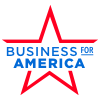Driving Public Policy Change: Lessons Learned
The world of public policy is, by definition, a world of intangibles. When you are trying to promote public policy change, you are dealing with the way the world “ought” to be, not necessarily the way the world “is.” Those individuals, groups, and organizations that oppose change have it far easier: preserving the status quo will always be a lot simpler than trying to change it.
Those of us who seek change must find ways to captivate people’s imaginations — to enable them to envision a different, and hopefully, a better world. I have always been moved by the Tennyson-inspired words of the late Senator Robert F. Kennedy. They were cited by his older brother, then-Senator Edward M. Kennedy, at RFK’s June 8, 1968, funeral in New York City’s St. Patrick’s Cathedral: “Some men see things as they are and say why. I dream things that never were and say why not.”
Change does occur. It can occur abruptly, as in the case of some major external event — a tragedy that galvanizes public attention and political will. More often, however, public policy change is the slow result of hard work over many years.
Twenty years ago I went to work at the Committee for Economic Development, just shortly after the CED board had decided to address issues relating to campaign finance reform. Founded in 1942, CED is a nonpartisan business-led policy organization that, in its early years, also helped develop the blueprint for what became the Marshall Plan for rebuilding parts of Western Europe after World War II. The organization had a rich pedigree of addressing issues that hindered economic growth while also promoting policies that would result in shared prosperity throughout the nation.
Several of CED’s trustees had become concerned about bipartisan campaign abuses in the 1996 Clinton and Dole presidential campaigns. Specifically, they were worried that the soft money shakedown — requests for unrestricted and unlimited funds from individuals, corporations, and labor unions — by both political parties was giving the business community a bad name. The public’s operating assumption had been that the American business community must like the existing campaign finance system since, in many instances, soft money contributions came from corporate America. In its first report on reforming the campaign finance system, CED’s trustees stated unequivocally that as business leaders they wanted to compete in the marketplace, not in the political arena.
On many occasions, people told me that CED was wasting its time, tilting at Don-Quixote-type windmills and pursuing a pipe dream. Campaign finance reform would never make it through the Congress.
Well, the naysayers were wrong. Congress did finally pass the 2002 Bipartisan Campaign Reform Act (BCRA), known informally as the McCain-Feingold-Shays-Meehan Act after the Democratic and Republican co-sponsors of the legislation in the U.S. House of Representatives and the U.S. Senate. BCRA was not designed to fix every campaign finance problem, but it did three important things: 1) it eliminated soft money, 2) it doubled the hard money (i.e., regulated contributions) limits from $1,000 to $2,000, and 3) it clarified the definitions of “issue advocacy” and “express advocacy.”
The U.S. Supreme Court has undone some of BCRA’s successes, but the 2002 legislation constituted the most important campaign finance legislation since the Watergate era. Looking back on how this legislative victory occurred, I have distilled three factors that might help explain the results — and spark ideas among today’s optimists!
First, there was national leadership. When he ran for president in 2000, Senator John McCain made campaign finance reform one of his signature issues. Along with Senator Russ Feingold and Congressmen Chris Shays and Marty Meehan, McCain helped highlight the issue’s importance nationally. Together, these leaders from both major political parties made the issue a national priority.
Second, for nearly two decades there were several interest groups and organizations working on campaign finance reform. Among these were Common Cause, the Creative Coalition, Democracy 21, the League of Women Voters, and several more. CED was proud to partner with these organizations. CED came relatively late to the “party,” but our contribution was a strong, credible business voice for reform. Senators McCain and Feingold told me (at first privately and later publicly) that CED’s business voice, entering the debate when it did, helped alter the dynamic of the reform movement. We also learned another valuable lesson: you can partner with another individual or organization even if you don’t agree 100 percent on every aspect of proposed legislation.
Third, the Enron scandal helped make tangible to millions of Americans why campaign finance reform mattered. They could see the interplay of money and politics in a way that cost people just like themselves their jobs, their pensions, their retirement plans, and their homes. Since most Americans did not make political contributions, campaign finance issues often appeared vague, abstract, and unrelated to their daily lives. Enron changed that equation relatively quickly. Many reformers believe that it was the Enron scandal that gave the reform movement the extra nudge that resulted in a legislative victory.
These three factors — national leadership, groups tilling the policy field, and a galvanizing event — played a major role in explaining BCRA’s passage. In my view, these factors can also be used as a template for assessing the prospects of other public policy issues. Take debt/deficit reform. There are plenty of groups at work but no national leadership and no (as of now!) economic crisis. Take early childhood education. Again, there are plenty of groups but no national leadership. (Additionally, three-year-olds don’t make political action committee contributions!)
At DisruptDC, we hope to influence national leadership by bringing a strong business voice to the business of structural government reform. We look forward to partnering with like-minded organizations. And together, we hope to be prepared for future galvanizing events that will make clear to all Americans why these reforms are critical to their economic future and to the health of our democratic institutions.

